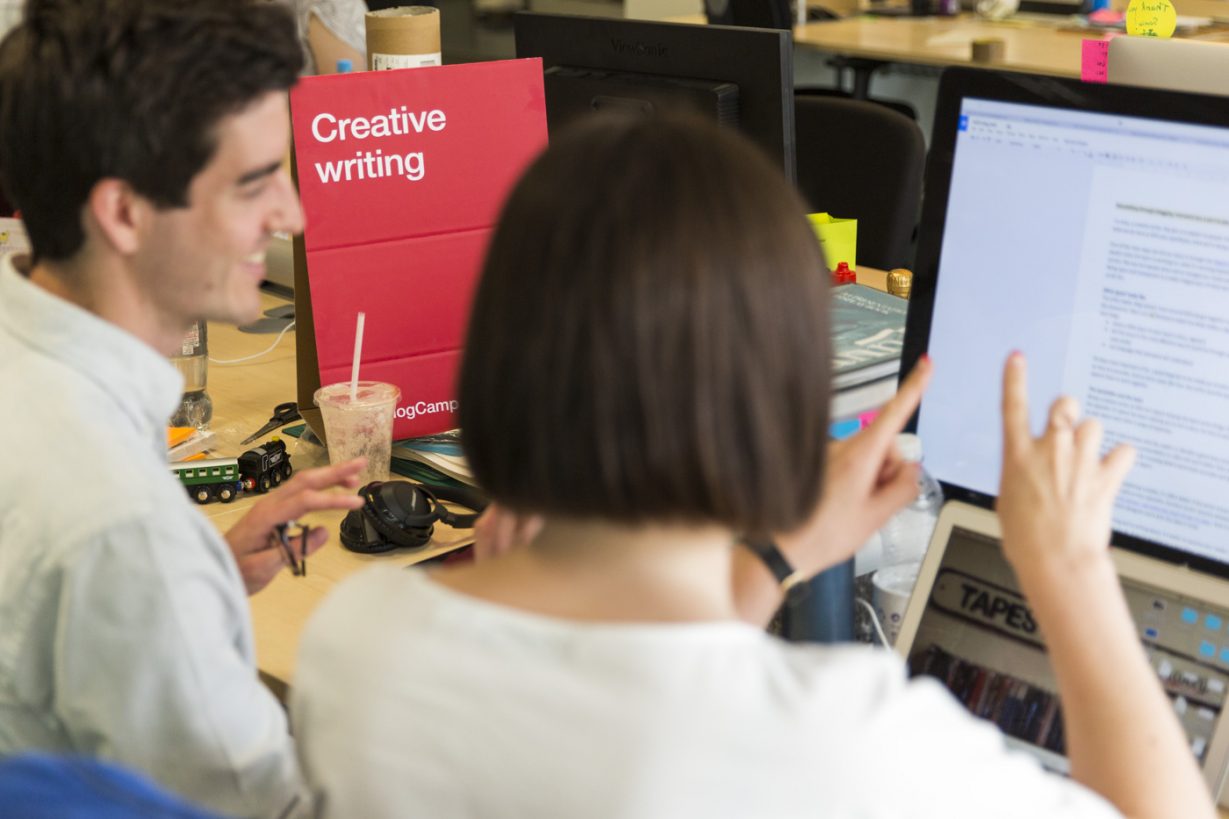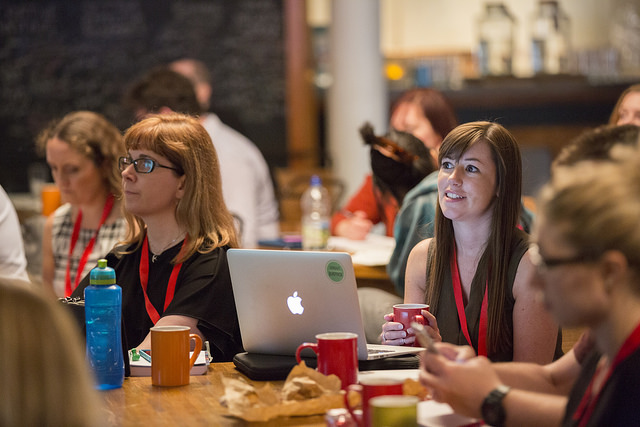I’m Amy, a creative writer at GDS. My job is to explain to people inside and outside government what we do here at GDS and, specifically, what we’re doing on the Digital Marketplace team.

One of the main ways we tell our story is through the Digital Marketplace blog. On it, we explain what the team is working on, what it’s working towards and how users are using the service. We also tell people when we’ve changed our minds about something and why. Being open and transparent is a really integral part of what we do at GDS, and blogging helps us do this.
What makes a blog 'good'

The other week, blog owners from around GOV.UK got together at the first #GovBlogCamp. We shared our ideas on writing for our readers and building readership. Someone asked me what makes a ‘good’ blog. I said that the best blogs:
- share a little piece of your team’s story, regularly
- tell the story in the most effective way (it could be through a guest author, video or case study)
- use language that everyone will understand
Perhaps most important of all, a good blog has to be made up of posts that are as engaging as they are accurate. And to write posts like that, the writer and the team’s subject matter experts have to work together.
The storyteller and the team
Being a creative writer at GDS isn’t about helping the team write things. It’s actually quite the opposite: it’s about the team helping you to tell a story. For this to work well, it’s good to be clear about each other’s areas of expertise.
It’s the storyteller’s job to know who the reader is; identify a good story and work out the best way to tell it (sometimes a presentation or video will work better than a blog post). But the storyteller isn’t responsible for knowing what’s technically accurate and legally correct. That’s down to a subject matter expert.
Being clear and correct
If the blog post is about something complex, it’s often better if the writer knows very little about the subject. Forms and surveys specialist, Caroline Jarrett recently tweeted that: ‘If you know enough to say it's correct, you know too much to say it's clear.’ And it’s true. GDS creative writers and content designers work with this idea in mind.
If you understand the thing you’re writing about, it’s easier to assume your reader has the same level of knowledge you do. If you’re working on a post about something you’re not particularly clued up on, you’re more likely to challenge the expert and anything that isn’t clear. Caroline added that: ‘No one can judge both clear and correct.’
Hard work. Totally worth it.
The fourth GDS design principle, ‘do the hard work to make it simple’, applies to storytelling too. It would be much quicker to go ahead and publish posts without input from the experts in the thing you’re writing about. It would be equally easy to give those experts the password to a blog and let them bash out accurate but badly-worded posts.
But giving the experts complete freedom, often means that jargon starts to creep in. Worse still, there’s a bigger risk of the user need not being identified before the post is started, which can mean that the most important points never get made.
Doing more, and harder, work to make things simple means we give people the information they need, when they need it. It’s the right thing to do for our readers. When teams work together, we inform, prepare, reassure our reader through accurate and engaging storytelling.
Follow Amy on Twitter, and don't forget to sign up for email alerts.


2 comments
Comment by Mike Stephens posted on
I'm sure there is room in this big tech world for some subject matters experts to be great storytellers too?
Comment by Luke Micallef posted on
I think there is Mike. The issue may come in ensuring that the content they produce is accessible.
The subject matter expert would be able to judge that the content was correct, but would know too much to say if it's clear and understandable. If the audience are also experts, it doesn't matter so much, but for a broader audience, it would be better to have an editor to read and review.